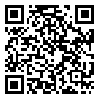BibTeX | RIS | EndNote | Medlars | ProCite | Reference Manager | RefWorks
Send citation to:
URL: http://ijoce.iust.ac.ir/article-1-322-en.html
For seismic resistant design of critical structures, a dynamic analysis, based on either response spectrum or time history is frequently required. Due to the lack of recorded data and randomness of earthquake ground motion that might be experienced by the structure under probable future earthquakes, it is usually difficult to obtain recorded data which fit the necessary parameters (e.g. soil type, source mechanism, focal depth, etc.) well. In this paper, a new method for generating artificial earthquake accelerograms from the target earthquake spectrum is suggested based on the use of wavelet analysis and artificial neural networks. This procedure applies the learning capabilities of neural network to expand the knowledge of inverse mapping from the response spectrum to the earthquake accelerogram. At the first step, wavelet analysis is utilized to decompose earthquake accelerogram into several levels, which each of them covers a special range of frequencies. Then for every level, a neural network is trained to learn the relationship between the response spectrum and wavelet coefficients. Finally, the generated accelerogram using inverse discrete wavelet transform is obtained. In order to make earthquake signals compact in the proposed method, the multiplication sample of LPC (Linear predictor coefficients) is used. Some examples are presented to demonstrate the effectiveness of the proposed method.
Received: 2017/07/1 | Accepted: 2017/07/1 | Published: 2017/07/1
| Rights and permissions | |
 | This work is licensed under a Creative Commons Attribution-NonCommercial 4.0 International License. |





